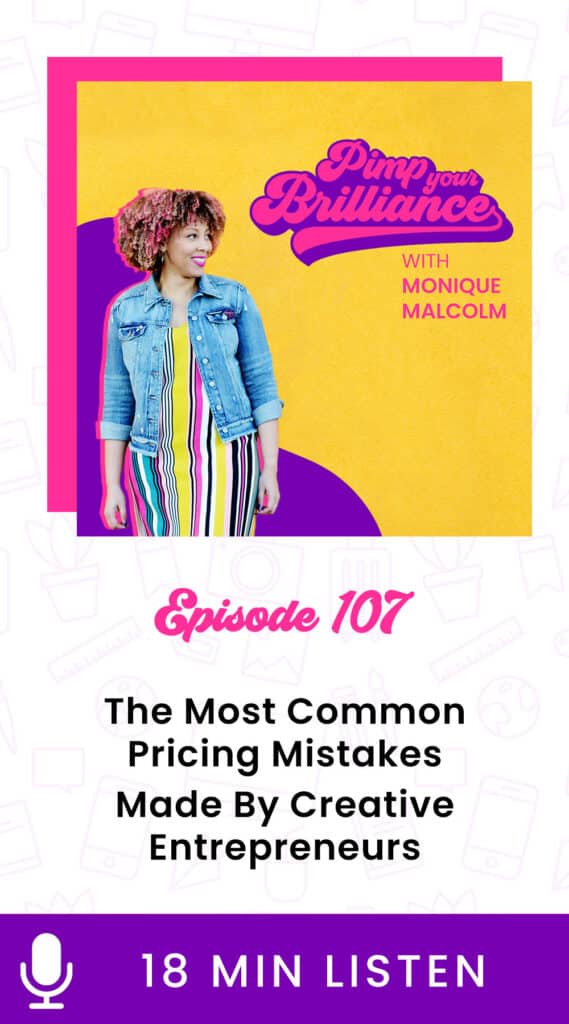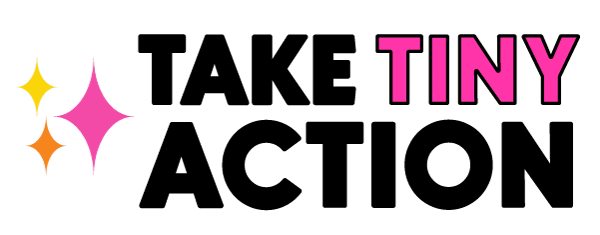
How much should I charge? Am I charging enough? Should I discount my price?
Pricing is a huge pain point for creative entrepreneurs. It’s the difference between being overworked and underpaid instead of a thriving entrepreneur.
In this episode, I’m sharing the 5 common pricing mistakes made by creative entrepreneurs.
The Truth About Pricing
Let me drop a little truth bomb on you. Most of the pricing mistakes that you’re making are tied to the belief that your pricing is what drives sales. That’s not true. Sales aren’t driven by price.
The primary reasons why people are choosing not to spend money with you is because you haven’t effectively communicated the value of what you do OR your leads aren’t qualified.
The belief that pricing drives your sales is what keeps creative entrepreneurs under pricing and under valuing their work.
Pricing Mistake #1: Pricing too low.
Everyone has priced their products too low at some point. There’s this belief that lower pricing equals more sales. So if you charge less, then more people are going to buy, but that’s not the case.
Lower pricing can actually have the opposite effect. It can lead customers to believing that your product is a low quality.
Solution: Raise your prices.
Pricing Mistake #2: Not pricing with profit in mind.
While we are often aware of the direct costs that are related to running our business, operating expenses don’t get as much attention and are left out of the pricing equation. Even further down on the list is profit. A lot of creative entrepreneurs don’t think ahead to having money to invest in the future.
Not pricing for profit means that there’s no money to invest in your business or allow for growth activities. At some point you’re going to want to hire additional help, invest in educational resources or even have the money to pay for advertising. Profit is what allows you to make those types of investment.
So when you are pricing, you need to make sure you have profit built into that price. Otherwise, when it’s time to make those investments, there’s not going to be any available money for that.
Solution: Know your numbers. How much does it cost to keep your business running? Once you determine that, add a line for profit.
Pricing Mistake #3: Pricing based on time and effort.
The cost to produce something does not always match the value that it provides. For example, you can create a workshop on a weekend but that doesn’t mean you should price it low.
Just because it didn’t take you a lot of effort or a lot of time to create it does not mean that it doesn’t hold value. This is why value-based pricing is so important. You need to be pricing your things based on the value that it creates for your ideal client and not the actual time and effort it took to create it.
Now there are cases where the end result is hard to quantify. In those cases, you need to think about the energy, the time and the money that you’re saving your client. What is the value of that? How much money are they saving? How much time are they saving? That still has value and especially to the right type of clients.
Solution: Price based on the value your product or service creates for your clients.
Pricing Mistake #4: Using discounts to drive sales.
Everyone loves a discount but that doesn’t mean that you should offer one. Discounting can be a great promotional strategy used occasionally. You should not be using discounts every time you want to drive sales or run a promotion for your products or services.
Don’t discount. Instead, add bonuses or add-on features to incentivize people to take action. Discounting eats into your profit and you need profit.
Solution: Use bonuses or additional features to incentivize people to buy.
Pricing Mistake #5: Pricing based on what your creative neighbor is charging.
I think it’s perfectly fine for you to be aware of what your creative neighbors are charging for similar products and services. But don’t look at their pricing and apply it to your own products and services.
You don’t know if they have properly priced themselves. They may be pricing too low, using cost and effort based pricing, or discounting.
Using someone else’s pricing opens you up to making all of the previously mentioned pricing mistakes. You need to price based on your own business and your own needs.
Solution: Set your pricing based on your own revenue needs and business goals.
Pin This:

